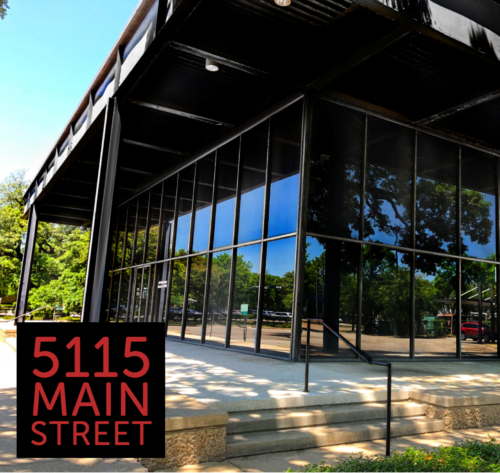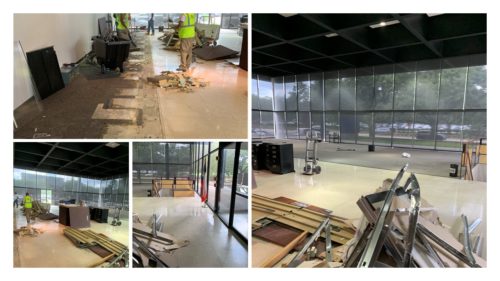Re-Rooting Houston Dance: Houston Met Dance Works to Serve the Gap

Late last May, the Houston dance community rattled with the news that Houston Met Dance (also Houston Metropolitan Dance Center, or HMDC) would close the doors of its studios at 2808 Caroline in Midtown. Over the next four months, students, dance artists, and supporters anxiously awaited news regarding its future, because as Houston Met Dance goes, so goes much of Houston dance. In a recent conversation with Founder and Artistic Director Michelle Smith and Board President Anne Sears, I learned about the HMDC’s new moves — a shift towards serving rather than creating and a return to the Museum District.
Re-Imagining
“A ton of conversations,” and an openness to change, according to Smith and Sears, have characterized the transition of Houston Met Dance from a company-driven model to one that focuses on how to best support small, mid-career arts organizations. Sears stressed their attention to rendering the organization financially secure in order to ensure both the long-term viability of the institution and to more clearly align with their mission “To enhance the quality of life for individuals and society through the instruction and the performance of dance.” Evaluation of the HMDC’s programming alongside its expenditures revealed that their greatest impact lay in the studio and educational outreach.
Accompanying the analysis of the organization’s structure, both Smith and Sears expressed the importance of listening — to board members, to institutions beyond Houston, to members of the community. As Sears explains, “It [HMDC] has been a consistent presence and kind of a nexus for the dance community for years, for decades, and we’ve seen how much that was valued during this time.”
While the necessary streamlining resulted in the decision to disband the professional company, HMDC’s innumerable connections with schools, arts organizations, and individual artists remain. Responsive leadership that balances new perspectives with institutional knowledge has shepherded Houston Met Dance through the tumult. Smith specifically credits the contributions of Sears and Board Treasurer Cecilia Winters-Morris, asserting that “Both were steadfast in their beliefs in the organization, what our programming does for the community and the future of where we are going.”
Re-Connecting
The physical and ideological movement of Houston Met Dance provides an opportunity for the organization to reestablish itself as a hub for collaboration, in particular for mid-career and small arts organizations. Smith and Sears aim to create a space in which everyone feels comfortable, from the dance community to the general public, in addition to opening their doors to theater organizations that have similarly suffered from a recent spate of space closures and company foldings. Smith envisions the new studio as an arena for mentorship, where those who have done the work may assist those who want to do the work with the ins and outs of presenting live performance in Houston. “Our ecosystem is very full of individuals who are very talented,” Smith observes, “ That’s the problem — It’s a whole group of individuals. So, we want to try to get everybody together so that they feel … more like a community.” Furthermore, the studio will serve as an incubator for ongoing work without the pressure of an outcome of performance, in part by leaving time in the studios available in the evenings to accommodate those many groups whose performers work full-time day jobs.
In another move to reengage the community, Smith explained the plan to revive and expand the introductory dance programming for adults, once the centerpiece of HMDC’s studio offerings, fulfilling motivations ranging from returning to dance to learning for the first time. Already, plans for the revamped program include jazz, African drumming, and flamenco, reflecting a greater responsiveness to the context of Houston as the most diverse city in the United States. Daytime students will also benefit from the reestablishment of weekday morning classes in ballet, modern, yoga, pilates, and, perhaps, even dance cardio.
Smith radiates enthusiasm regarding the possibilities borne of the shift towards serving the needs of the Houston arts community. While the Midtown closure could have left her and the board washing their hands of the entire enterprise, they have instead recommitted to their roots — inclusive, yet technically rigorous training opportunities and space for exploration. A follow-up conversation with Smith continued at the pace of the first; she bursts with ideas — for presenting other organizations, for expanding the educational outreach programming, for ways to generate fiscal support for arts services — and she wants to hear yours, too. After nearly 25 years at the helm of Houston Met Dance, Michelle Smith exudes a selflessness in sharing her knowledge and resources as expansive as the reach of the generations of HMDC students scattered across the globe. I hope that in the coming months, we all accept the invitation to reconnect not only with Houston Met Dance, but also with each other.
 Re-Turning
Re-Turning
The Museum District re-welcomes Houston Met Dance at 5115 Main Street, mere blocks from its original location on Saturday November 2, when HMDC’s galaxy of star instructors return in full force. The new building, formerly a bank lobby, will mimic the structure of its predecessor, housing three studios. Ample parking will provide students and supporters alike room to stretch their legs, and the walls of windows will allow the community to both peer inside and encourage them to participate. Although classes, which had been held at the MATCH, have been suspended to accommodate the move, you may find HMDC on social media through Facebook, Instagram (@houstonmetdance) and on their website (metdance.org) for the latest details on their reopening and re-vision of Houston dance.



Recent Comments